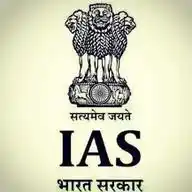
State PCS Exam || राज्य पीसीएस परीक्षा
2.1K subscribers
About State PCS Exam || राज्य पीसीएस परीक्षा
UPSC & 𝘚𝘛𝘈𝘛𝘌 𝘗𝘊𝘚 𝘌𝘹𝘢𝘮 𝘗𝘳𝘦𝘱𝘢𝘳𝘢𝘵𝘪𝘰𝘯. 𝘖𝘯𝘦 𝘓𝘪𝘯𝘦𝘳 𝘗𝘳𝘦𝘭𝘪𝘮𝘴 & 𝘔𝘢𝘪𝘯𝘴 𝘔𝘢𝘵𝘦𝘳𝘪𝘢𝘭𝘴. 𝘌𝘯𝘨𝘭𝘪𝘴𝘩+𝘏𝘪𝘯𝘥𝘪.
Similar Channels
Swipe to see more
Posts

*🛡️Features Of Fundamental Duties* ♟️Some of them are moral duties while others are civic duties. For instance, cherishing noble ideals of freedom struggle is a moral precept and respecting the Constitution, National Flag and National Anthem is a civic duty. ♟️They refer to such values which have been a part of the Indian tradition, mythology, religions and practices. ♟️Fundamental Duties are confined to citizens only and do not extend to foreigners. ♟️Fundamental duties are non-justiciable. The Constitution does not provide for their direct enforcement by the courts.

*🛡️Champaran Movement (1917-18)* The peasantry on the indigo plantations in the Champaran district of Bihar was excessively oppressed by the European planters and compelled to grow indigo on at least 3/20th of their land and sell it at prices fixed by the planters. In 1917, Mahatma Gandhi reached Champaran and defied the orders of district officials for leaving Champaran.

*🛡️Committee Name -- Establishment Year -- Details* ♟️ *Kapur Commission -- 1966* -- The Kapur Commission was a commission of inquiry of Mysore, India, into the murder conspiracy of Mohandas Karamchand Gandhi. ♟️ *Khosla Commission -- 1970* -- To re-investigate the death of Subhas Chandra Bose ♟️ *Mandal Commission -- 1979* -- Mandal Commission was constituted in the year 1979 with the objective of "identification of socially or educationally backward class". This commission was headed by Indian B.P Mandal. ♟️ *Mukherjee Commission -- 1959* -- To re-investigate the death of Subhas Chandra Bose ♟️ *Narendran Commission -- 2000* -- Narendran Commission was an inquiry commission appointed by The Government of Kerala, India, in February 2000 to study and report on the adequacy or otherwise of representation for Backward Classes in the State public services. ♟️ *National Commission to Review the Working of the Constitution -- 2000* -- To suggest changes in electoral laws

*Indian Constitution* https://whatsapp.com/channel/0029VbB13w9Fy72GmQPA1023 *Join Fast 👆*

*🛡️Food and Agriculture Organization (FAO)* ♟️A specialized agency of the United Nations that leads international efforts to defeat hunger and improve nutrition and food security. *♟️Founded:-* In 1945 in Quebec City, Canada (HQ - Rome, Italy) ♟️India – Joined in 1945 as founding member *♟️Global Coverage* With 195 members - 194 countries and the European Union, FAO works in over 130 countries world wide. *💎Global Reports and Publications* ♟️The State of Food Security and Nutrition in the World (SOFI) ♟️The Impact of Disasters on Agriculture and Food Security ♟️Global Report on Food Crises

*💎Global Report on Food Crises 2025* ♟️The Global Report on Food Crises 2025, reveals that acute hunger has reached a new record high globally. ♟️The Global Report on Food Crises (GRFC) is an annual, consensus-based technical report coordinated by the Food Security Information Network (FSIN) in support of the Global Network Against Food Crises (GNAFC). *💎Key Findings of the 2025 GRFC* ♟️Record High Acute Hunger: In 2024, 295.3 million people in 53 countries faced acute food insecurity, up from 281.6 million in 2023. This marks the sixth consecutive annual increase and the highest level since reporting began. ♟️Crisis Severity: Nearly a quarter of the population in the assessed countries suffered from acute hunger, with 1.9 million people facing famine conditions (IPC/CH Phase 5)-more than double the previous year. ♟️Humanitarian Funding Crisis: Humanitarian allocations to food sectors could fall by up to 45% in 2025, threatening life-saving nutrition services for at least 14 million children and disrupting aid in major crisis zones. ♟️Children and Women: Over 37 million children under five in 26 countries suffered from acute malnutrition in 2024, with more than 10.2 million experiencing severe acute malnutrition.

*🛡️FAMOUS INDIAN PAINTINGS* ♟️Madhubani Painting--Bihar ♟️Patachitra Painting--Odisha ♟️Kalamkari Painting--Andhra Pradesh ♟️Pithora Painting--Gujarat ♟️Warli Paintings--Maharashtra ♟️Kalighat painting--Kolkata West Bengal

*🛡️The Types of Mountain* 💎 *Based on Mode of Origin* ♟️ *Volcanic Mountains* Formed by the eruption of magma from the Earth's crust, creating peaks like those in Hawaii and Fiji. ♟️ *Fold Mountains* Created by the collision and folding of tectonic plates, such as the Himalayas and the Andes. ♟️ *Block Mountains* Formed by faulting and the movement of large blocks of the Earth's crust, leading to raised or dropped sections, like the Sierra Nevada. ♟️ *Dome Mountains* Created by magma pushing the Earth's crust upward, forming a dome-like structure, often exposed after erosion like Black Hills (US). ♟️ *Plateau Mountains* These mountains resemble dome mountains but are formed by colliding tectonic plates pushing up the land, shaped by weathering and erosion. 💎 *Based on Period of Origin* ♟️ *Precambrian Mountains* Precambrian mountains are ancient ranges formed during the Precambrian era (4.6 billion to 541 million years ago). They have experienced extensive erosion and metamorphism over billions of years, leaving behind residual formations (e.g., Aravallis in India). ♟️ *Caledonian Mountains* Formed around 430 million years ago (e.g., Appalachians). ♟️ *Hercynian Mountains* These mountains originated from the Carboniferous to Permian Period (approximately 340 million years and 225 million years) (e.g., Ural Mountains). ♟️ *Alpine Mountains* The youngest mountain systems formed during the Tertiary period(66 million years ago) (e.g., Himalayas, Alps).

*🛡️Constitutional bodies in India* ♟️Attorney General of India ♟️National Commission for Scheduled Castes, ♟️National Commission for Scheduled Tribes, ♟️National Commission for Backward Classes, etc. *🛡️Statutory Bodies in India* ♟️National Commission for Women ♟️Central Vigilance Commission ♟️National Green Tribunal

*🛡️India’s Energy Goals* *♟️Net Zero Target by 2070:* India aims to achieve net-zero emissions by 2070, requiring massive shifts in energy systems. *♟️500 GW from Non-Fossil Sources by 2030:* India plans to install 500 GW of non-fossil capacity (solar, wind, nuclear, hydro). *♟️Nuclear Energy Expansion:* Government aims for 100 GW of nuclear power capacity by 2047 to meet base-load requirements. *♟️Green Hydrogen Mission:* Focus on using renewable electricity for green hydrogen to decarbonise industries. ♟️ *Electrification of End-Use Sectors:* Transition to electric vehicles, heat pumps, and electric furnaces to cut fossil fuel dependency










